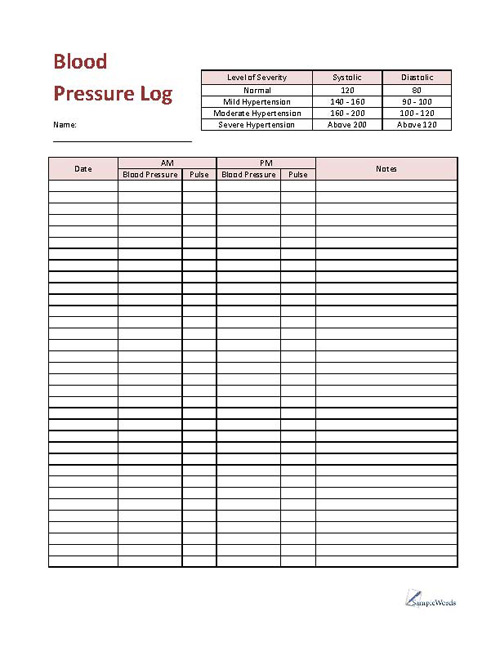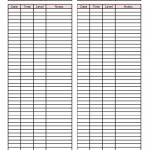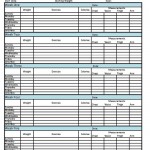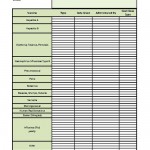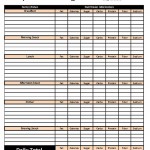This free printable blood pressure log is to be used by individuals to track their blood pressure readings for medical or personal monitoring.
This form contains a table of the various blood pressure levels, ranging from normal to severe hypertension. The form allows for logging of both morning and evening blood pressure readings and will hold up to 34 days of readings. Using this form you can also record your pulse in beats per minute and include other notes regarding your health information and medications.
Download Blood Pressure Log – PDF
Easily Convert this PDF to Word and Other File Formats
High blood pressure is a common problem. Over time it can damage organs in your body, often contributing to strokes and heart disease.
You can measure your blood pressure using a simple tool with a cuff and air pump. Portable, at-home blood pressure cuffs are available in all drug stores like Walgreens and CVS, but are also available in the health section of large supermarkets and at Walmart. Most devices have digital readouts to help make the process quick and easy. This device provides a reading of your systolic and diastolic pressure which measures your arteries filled with blood and then also at rest. A reading of 120/80 has often been used as a baseline measurement for a healthy human being. Much higher and you need to speak with a physician.
According to the American Heart Association, monitoring your blood pressure at home is helpful if it goes along with the periodic visits to your doctor.
What are the benefits of tracking blood pressure on a daily log?
Tracking blood pressure is an important part of managing overall health. It can help identify potential health issues before they become serious, and can also help monitor the effectiveness of treatments. The primary benefit of tracking blood pressure is that it can help identify potential health issues before they become serious. High blood pressure (hypertension) is a major risk factor for heart disease, stroke, and other serious health conditions.
This type of monitoring is ideal for individuals with a family history of high blood pressure. Even if you don’t have current issues, periodic monitoring can help you diagnose early. It’s strongly encouraged to monitor if you have been formally diagnosed with hypertension. If you are able to provide your physician with accurate results of the readings, then they will be able to determine the proper treatment. It will also make it easier to determine if medications are working or if they need to be adjusted.
Can blood pressure logs be shared with healthcare providers?
What are the symptoms of high blood pressure?
- Headaches: Intense or recurrent headaches, particularly at the back of the head, may occur in cases of severe hypertension.
- Shortness of breath: Difficulty breathing or shortness of breath can occur, especially during physical exertion.
- Chest pain: Chest pain or tightness may be experienced during periods of high blood pressure, particularly during a hypertensive crisis.
- Dizziness or lightheadedness: Feeling dizzy or lightheaded, especially when standing up quickly, can be a symptom of high blood pressure.
- Blurred vision: Vision problems, such as blurred vision or difficulty focusing, may occur during episodes of high blood pressure.
- Fatigue or confusion: Persistent fatigue, weakness, or confusion can be associated with chronic hypertension.
It’s important to note that these symptoms are not exclusive to high blood pressure and can be caused by various other health conditions. The only definitive way to diagnose high blood pressure is to have your blood pressure measured by a healthcare professional. Regular blood pressure checks are recommended, especially if you have risk factors such as a family history of hypertension, obesity, or a sedentary lifestyle.
This blood pressure log can be helpful in organizing your results for your own records as well as providing documentation for your health care provider. Whether daily, weekly or even monthly, it’s a good idea to maintain a record of your blood pressure as one measure of tracking your health.

